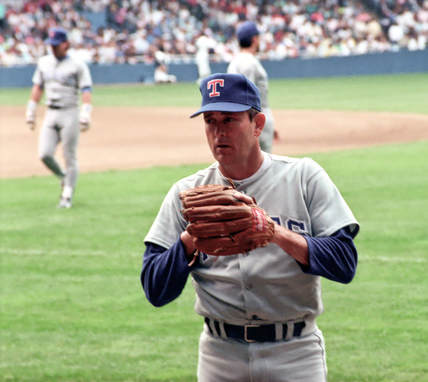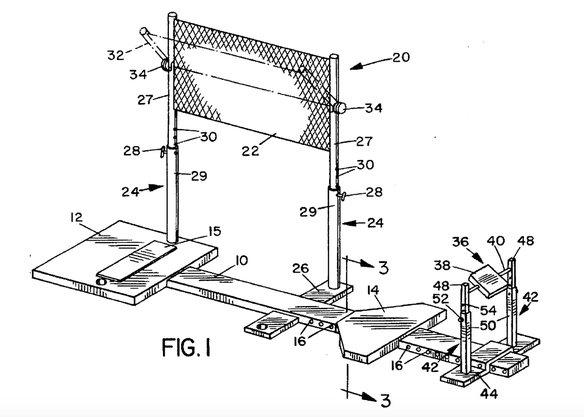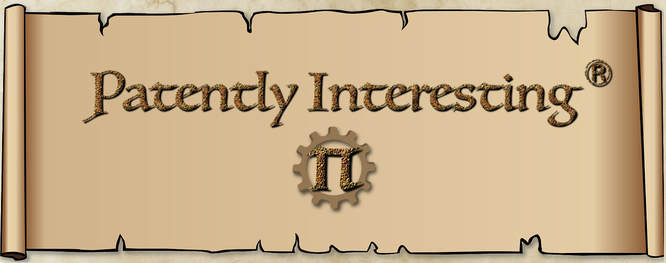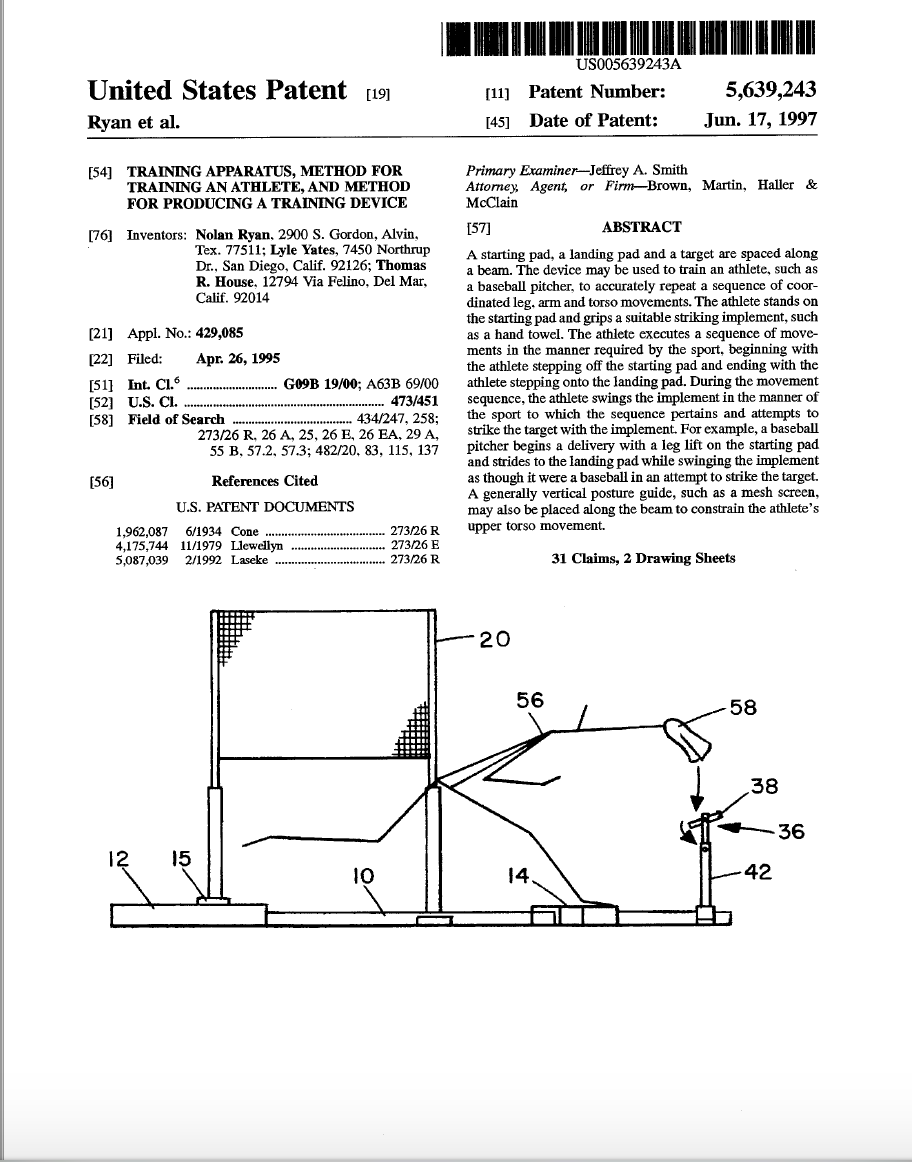 By Chuck Andersen (Nolan Ryan - Tiger Statium 1990) [CC BY 2.0 (https://creativecommons.org/licenses/by/2.0)], via Wikimedia Commons
By Chuck Andersen (Nolan Ryan - Tiger Statium 1990) [CC BY 2.0 (https://creativecommons.org/licenses/by/2.0)], via Wikimedia Commons
On June 17 of the year 1997, U.S. Patent No. 5,639,243 issued to Nolan Ryan, Lyle Yates and Tom House for a training apparatus for improving a pitcher's delivery and, thus, accuracy.
Ryan is generally recognized as being one of the hardest throwing pitchers in the history of major league baseball. In a career that spanned 27 years (from 1966 to 1993), Ryan amassed a number of records, including the most strikeouts (5,714), the most no-hitters (seven) and for the American League, the most strikeouts in a single season (383). In addition, it is believed that he threw the fastest pitch ever on August 20, 1974 when a laser radar gun measured the pitch at 100.9 mph. However, the measurement was made 9-10 feet from the plate, instead of the proper 50 feet from the plate. Correcting for the error in placement of the radar gun brings the actual speed of the pitch to an incredible 108.1 mph. The speed of his pitches earned Ryan the nickname: "The Ryan Express".
Like Ryan, Tom House was a pitcher; however, he spent more than half his career in the minor leagues and was not known for being a hard thrower. Instead, House relied on a curve ball and a screwball. The most notable moment in his playing career was catching Hank Aaron's record-setting 715th home run in the Atlanta Braves' bullpen in left-center field. At the time, both House and Hank Aaron were members of the Braves.
After his career as a player was over, House became a pitching coach and author of a number of books on pitching mechanics. He also obtained a Ph.D. in sports psychology. From 1985 to 1992, House was the pitching coach for the Texas Rangers, which is where he met Nolan Ryan. From 1989 to 1992, House worked with Ryan to help improve Ryan's already formidable pitching. Together, House and Ryan developed a number of new training techniques, one of which resulted in the '243 patent.
The apparatus of the '243 patent essentially facilitated the performance of a more glorified version of a pitching drill House had earlier devised called the "towel drill", which is still commonly used today. As described in the '243 patent, in the towel drill, a pitcher "wraps his middle finger around the center of a small hand towel that has been gathered or rolled into an elongated shape. A second person kneels at a distance from the pitcher approximately five or six feet greater than the length of the pitcher's stride. The second person extends his arm outwardly toward the pitcher with his palm facing upwardly. The pitcher then performs a complete delivery as though the towel were a baseball, attempting to strike the second person's palm with the towel as his arm arcs downwardly past the point where he would have released the baseball." If the pitcher performs the delivery properly, the towl will snap against the second person's hand, whereas if the pitcher performs the delivery improperly, the towel will fail to strike the second person's hand. In this manner, the pitcher immediately receives aural and tactile feedback on their delivery.
Ryan is generally recognized as being one of the hardest throwing pitchers in the history of major league baseball. In a career that spanned 27 years (from 1966 to 1993), Ryan amassed a number of records, including the most strikeouts (5,714), the most no-hitters (seven) and for the American League, the most strikeouts in a single season (383). In addition, it is believed that he threw the fastest pitch ever on August 20, 1974 when a laser radar gun measured the pitch at 100.9 mph. However, the measurement was made 9-10 feet from the plate, instead of the proper 50 feet from the plate. Correcting for the error in placement of the radar gun brings the actual speed of the pitch to an incredible 108.1 mph. The speed of his pitches earned Ryan the nickname: "The Ryan Express".
Like Ryan, Tom House was a pitcher; however, he spent more than half his career in the minor leagues and was not known for being a hard thrower. Instead, House relied on a curve ball and a screwball. The most notable moment in his playing career was catching Hank Aaron's record-setting 715th home run in the Atlanta Braves' bullpen in left-center field. At the time, both House and Hank Aaron were members of the Braves.
After his career as a player was over, House became a pitching coach and author of a number of books on pitching mechanics. He also obtained a Ph.D. in sports psychology. From 1985 to 1992, House was the pitching coach for the Texas Rangers, which is where he met Nolan Ryan. From 1989 to 1992, House worked with Ryan to help improve Ryan's already formidable pitching. Together, House and Ryan developed a number of new training techniques, one of which resulted in the '243 patent.
The apparatus of the '243 patent essentially facilitated the performance of a more glorified version of a pitching drill House had earlier devised called the "towel drill", which is still commonly used today. As described in the '243 patent, in the towel drill, a pitcher "wraps his middle finger around the center of a small hand towel that has been gathered or rolled into an elongated shape. A second person kneels at a distance from the pitcher approximately five or six feet greater than the length of the pitcher's stride. The second person extends his arm outwardly toward the pitcher with his palm facing upwardly. The pitcher then performs a complete delivery as though the towel were a baseball, attempting to strike the second person's palm with the towel as his arm arcs downwardly past the point where he would have released the baseball." If the pitcher performs the delivery properly, the towl will snap against the second person's hand, whereas if the pitcher performs the delivery improperly, the towel will fail to strike the second person's hand. In this manner, the pitcher immediately receives aural and tactile feedback on their delivery.
 Apparatus of the '243 patent
Apparatus of the '243 patent
In the apparatus of the '243 patent, a beam 10 connects a starting platform 12 to a landing platform 14, with the starting and landing platforms being the respective positions at which a pitcher starts and finishes their delivery. A target 36 is positioned beyond the landing platform and functions as the second person of the towel drill. The target is comprised of a strike pad 38 rotatably mounted between two support posts 42. The distance of the landing platform from the starting platform and the distance of the target from the landing platform are both adjustable to accommodate different-sized pitchers.
A posture guide 20 comprising a screen 22 is mounted to the side of the beam and the starting and landing platforms. A top portion of the screen is angularly adjustable to slope inwardly, toward the beam. The posture guide is preferably adjusted to an angle that best approximates the angle of a pitcher's body when it comes out of the leg lift and begins the stride, such as 20-30 degrees from vertical. The posture guide constrains the pitcher's upper torso movement during the delivery.
A pitcher uses the apparatus of the '243 patent by first standing on the starting platform, with his back facing the posture guide and grasping a hand towel with the middle finger of his pitching arm. The pitcher lifts his leg and then lowers it, as he strides forward along the beam, finally planting the leg on the landing platform. As the pitcher strides forward, he rotates his torso. After his foot strikes the landing platform, the pitcher follows through with his pitching arm and towel. If the delivery is correct, the towel will hit the strike pad and cause it to spin, thereby providing visual and aural feedback to the pitcher.
It is not known whether Ryan, House and Yates made any money from the '243 patent. Since the '243 patent was allowed to go abandoned 3 and a half years after it issued, it seems unlikely. However, the '243 patent probably helped House market his training materials and services, as well as help establish his reputation as being the father of modern pitching mechanics.
A posture guide 20 comprising a screen 22 is mounted to the side of the beam and the starting and landing platforms. A top portion of the screen is angularly adjustable to slope inwardly, toward the beam. The posture guide is preferably adjusted to an angle that best approximates the angle of a pitcher's body when it comes out of the leg lift and begins the stride, such as 20-30 degrees from vertical. The posture guide constrains the pitcher's upper torso movement during the delivery.
A pitcher uses the apparatus of the '243 patent by first standing on the starting platform, with his back facing the posture guide and grasping a hand towel with the middle finger of his pitching arm. The pitcher lifts his leg and then lowers it, as he strides forward along the beam, finally planting the leg on the landing platform. As the pitcher strides forward, he rotates his torso. After his foot strikes the landing platform, the pitcher follows through with his pitching arm and towel. If the delivery is correct, the towel will hit the strike pad and cause it to spin, thereby providing visual and aural feedback to the pitcher.
It is not known whether Ryan, House and Yates made any money from the '243 patent. Since the '243 patent was allowed to go abandoned 3 and a half years after it issued, it seems unlikely. However, the '243 patent probably helped House market his training materials and services, as well as help establish his reputation as being the father of modern pitching mechanics.


